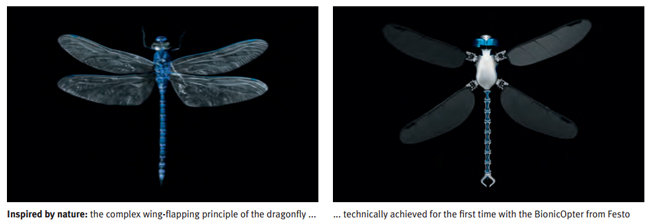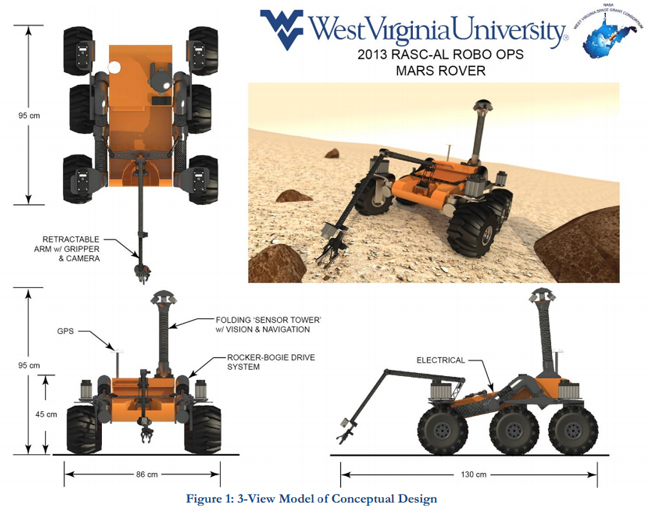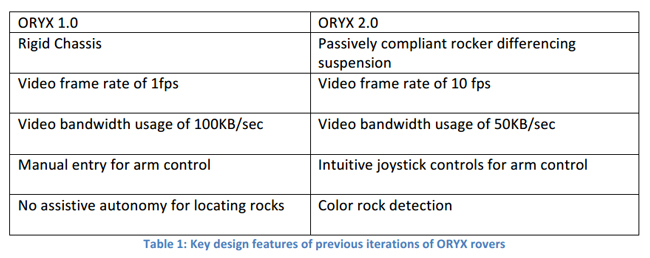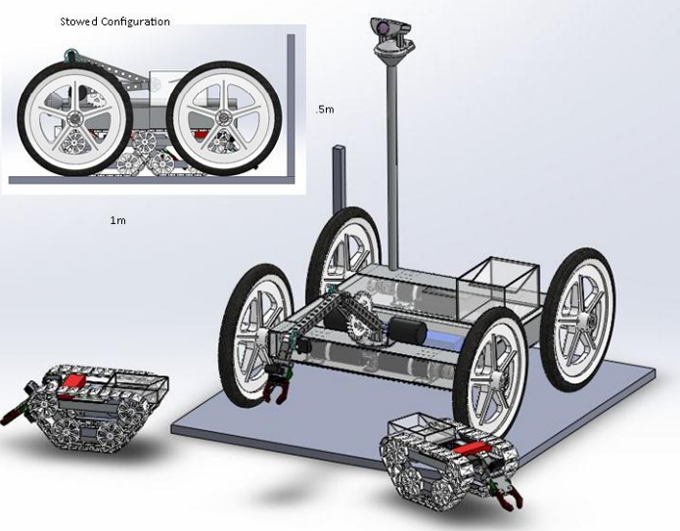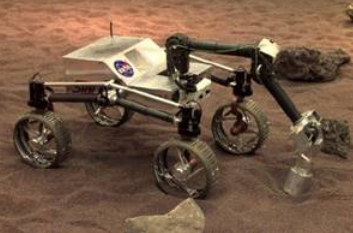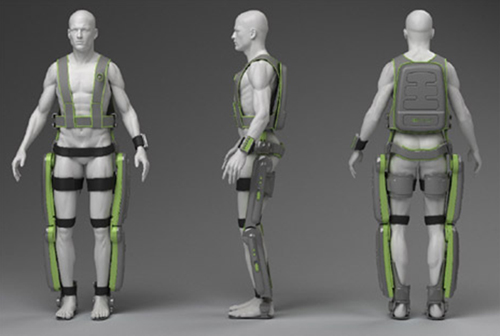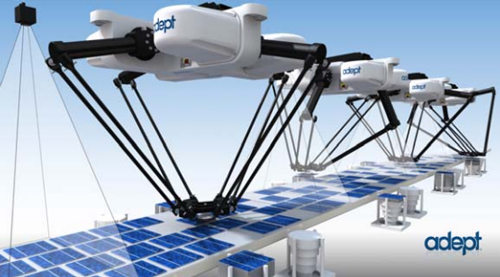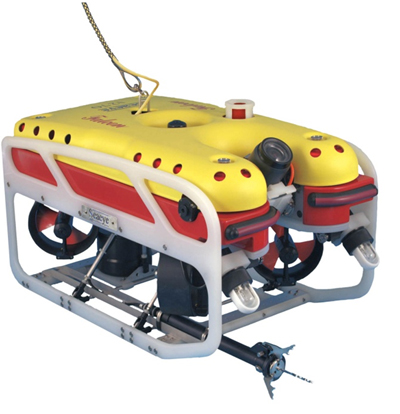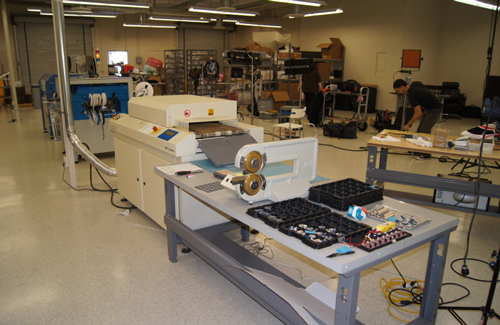Interview With West Virginia University: RASC-AL Competition
In this exciting competition, undergraduate and graduate students are invited to create a multi-disciplinary team to build a planetary rover prototype and demonstrate its capabilities to perform a series of competitive tasks in field tests at the NASA Johnson Space Centers Rock Yard in June 2013.
Interview With Worcester Polytechnic Insitute, "Team Oryx": RASC-AL Competition
In this exciting competition, undergraduate and graduate students are invited to create a multi-disciplinary team to build a planetary rover prototype and demonstrate its capabilities to perform a series of competitive tasks in field tests at the NASA Johnson Space Centers Rock Yard in June 2013.
Festo's BionicOpter Mechanical Dragonfly
The mechanics of dragonfly flight are unique: dragonflies can manoeuvre in all directions, glide without having to beat their wings and hover in the air.
West Virginia University's Entry to 2013 RASC-AL Competition
RASC-AL Exploration Robo-Ops Competition (i.e., Robo-Ops) is an engineering competition sponsored by NASA and organized by the National Institute of Aerospace. In this exciting competition, undergraduate and graduate students are invited to create a multi-disciplinary team to build a planetary rover prototype and demonstrate its capabilities to perform a series of competitive tasks in field tests at the NASA Johnson Space Centers Rock Yard in June 2013.
Worcester Polytechnic Institute's Entry to 2013 RASC-AL Competition
RASC-AL Exploration Robo-Ops Competition (i.e., Robo-Ops) is an engineering competition sponsored by NASA and organized by the National Institute of Aerospace. In this exciting competition, undergraduate and graduate students are invited to create a multi-disciplinary team to build a planetary rover prototype and demonstrate its capabilities to perform a series of competitive tasks in field tests at the NASA Johnson Space Centers Rock Yard in June 2013.
FAMU/FSU College of Engineering's Entry to 2013 RASC-AL Competition
RASC-AL Exploration Robo-Ops Competition (i.e., Robo-Ops) is an engineering competition sponsored by NASA and organized by the National Institute of Aerospace. In this exciting competition, undergraduate and graduate students are invited to create a multi-disciplinary team to build a planetary rover prototype and demonstrate its capabilities to perform a series of competitive tasks in field tests at the NASA Johnson Space Centers Rock Yard in June 2013.
The RoboUtes' Entry to 2013 RASC-AL Competition
RASC-AL Exploration Robo-Ops Competition (i.e., Robo-Ops) is an engineering competition sponsored by NASA and organized by the National Institute of Aerospace. In this exciting competition, undergraduate and graduate students are invited to create a multi-disciplinary team to build a planetary rover prototype and demonstrate its capabilities to perform a series of competitive tasks in field tests at the NASA Johnson Space Centers Rock Yard in June 2013.
University of Nebraska-Lincoln's Entry to 2013 RASC-AL Competition
RASC-AL Exploration Robo-Ops Competition (i.e., Robo-Ops) is an engineering competition sponsored by NASA and organized by the National Institute of Aerospace. In this exciting competition, undergraduate and graduate students are invited to create a multi-disciplinary team to build a planetary rover prototype and demonstrate its capabilities to perform a series of competitive tasks in field tests at the NASA Johnson Space Centers Rock Yard in June 2013.
RASC-AL Exploration Robo-ops Competition
Robo-ops gives students an opportunity to engineer a solution to a future NASA mission and be a part of the NASA team. They get to compete and network with other students in their field and have fun while doing it all. NASA gets innovative ideas for its future missions and exposure to some brilliant talent that could soon be part of the NASA team. We all get smarter from this.
Robotic Integration For Assisted Movement
Powered exoskeletons have the potential to change battlefield technology forever. Paraplegic patients may leverage new technologies to walk again. Future exoskeletons will better integrate with humans, blurring the line between man and machine.
Industrial Robots with Image Processing in the Photovoltaic Industry
A 'seeing' robot can flexibly pick up, recognize and measure wafers, solar cells and even whole modules and then place the gripped objects with great precision and speed.
Robots in the Deep
The oceans are unfathomable, dark and dangerous; yet researchers are building undersea robots that can find their way in the mysterious deep. Scientists now have a variety of research and work vehicles to explore where no man has gone before.
Interview - Unmanned Arial Vehicle (UAV) Tech
You can pretty much give UAVs any use you want, provided that you have enough imagination and patience to see that function come alive. Some of the most common uses right now and in the future will probably be related to photography, mapping, surveillance, surveying and any other activities that might involve risking human lives.
Records 31 to 43 of 43
Featured Product
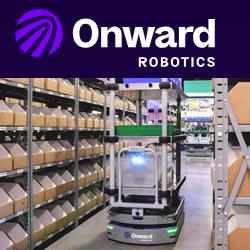
Onward Robotics - Meet Me Fulfillment Automation
Meet Me uniquely brings talent and technology together: providing end-to-end process efficiency and enabling accurate and continuous fulfillment workflows. Proprietary Pyxis technology uniquely orchestrates picker and Lumabot AMR workflows independently, delivering fast, accurate, and efficient fulfillment from induction to pack out. Learn more about Meet Me Automation: Download Overview Brochure
Robotics and Automation - Featured Company

Zimmer Group US, Inc.
Are you interested in premium products in the fields of mechanical and plant engineering? Do you want to learn more about our solutions in the fields of automation, damping, linear, processing, tooling, and machine tooling technology?

